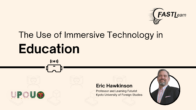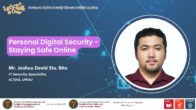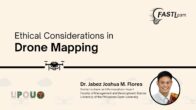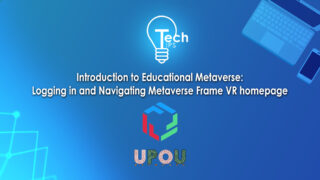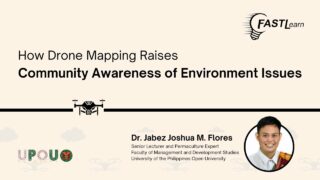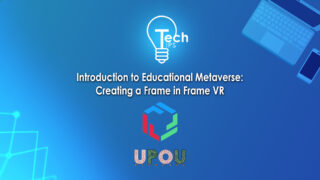Alright, so let’s talk about some examples that this technology can be used in particularly teaching and learning context, in educational context.
In my classes here at the Kyoto University of Foreign Studies and in my research online, you can find more at erichawkinson.com.
For example, what we see behind me here is a screen and our tourism students are using this to create virtual tours in virtual tour business simulations, where normally they’d be going out into rural places in Japan,
doing some research, and hopefully either coming up with some funds and some research and some logistical capability to take groups of tours out in there, to test to see if this is a viable business, a viable tour moving forward.
Instead, we’re teaching students how to create tours inside of virtual reality and bringing them into a space like this and simulating that tour out in the wild.
So they’ll, in the screen behind me, they’ll ride the bus, they’ll ride the train, they’ll go to a specific location and walk around together, maybe do some actual experiences and simulate a tour. It’s quite different than a presentation.
Even the vocabulary students are using when they’re using this technology is different.
For example, if you’re watching PowerPoint presentation, they may say something like, this is a picture of my hometown.
But if they’re showing their hometown, they’ll say, welcome to my hometown.
There’s much more of a feeling like you’re visiting there. There’s more of a camaraderie, a rapport, an intimacy when you’re using these immersive technologies.
That’s a virtual reality example, but there is also augmented reality that’s being used in our classes here at the Kyoto University of Foreign Studies as well.
Reality Labo is an augmented reality tool where students in a course called gamified experience design are using sort of like a Pokemon Go concept to create digitized gamified tours of campus.
And so you walk into campus, you’ll be greeted by a hologram that gives you a hint or a clue or tells you about a storyline.
You’ll listen to that hint or that storyline and search for a new place on campus another hint, move on to the next place, to the next place, and the next place.
And so it’s kind of, think about sort of like a cross between playing a game, playing something like a Pokemon Go where you’re out in the world searching for digital things in real places
and part escape room where you’re working together with a group of other people, other visitors, other students to try to build face-to-face sort of skills and approaches and teamwork along with it.
This is what I was saying before, right?
The blending of real-world experiences with digital experiences. And this is where we start to play with these technologies in learning settings.
